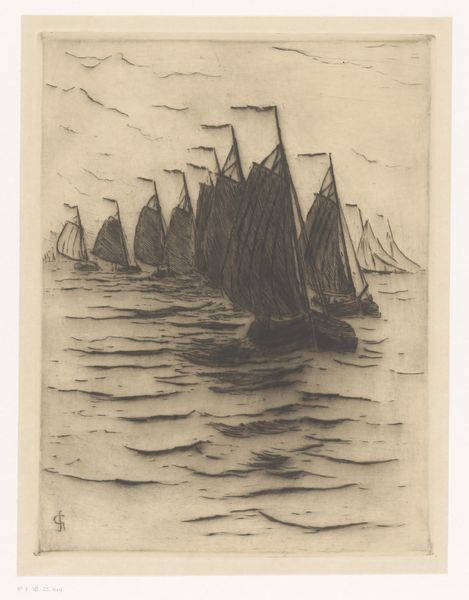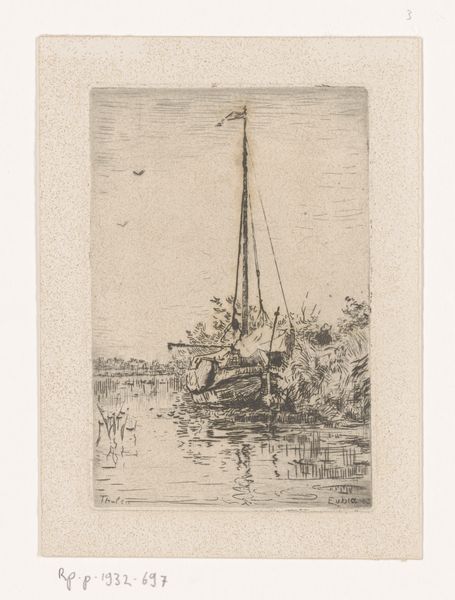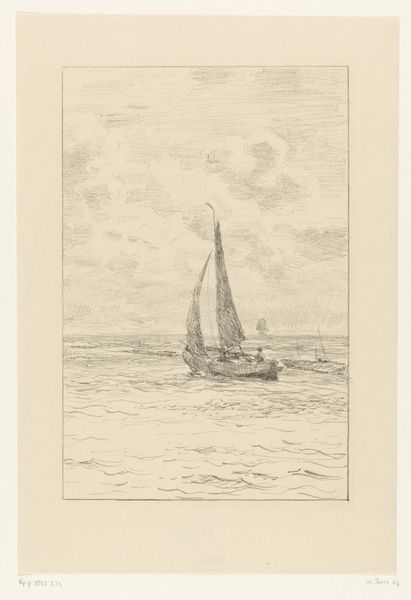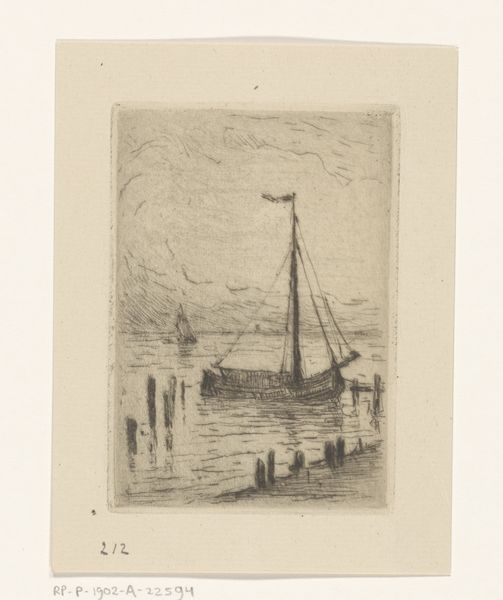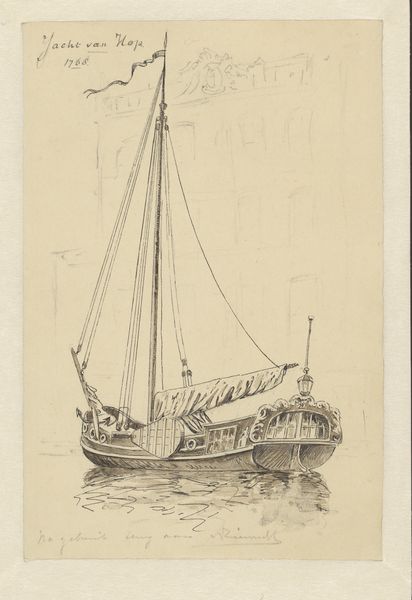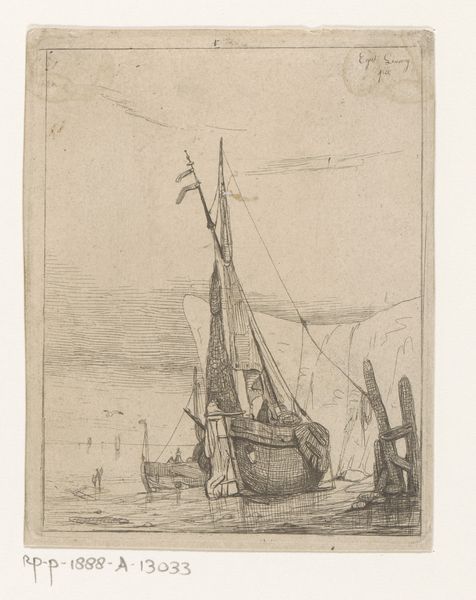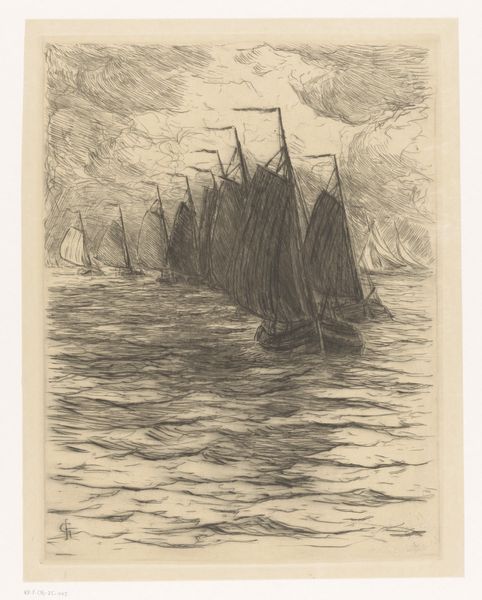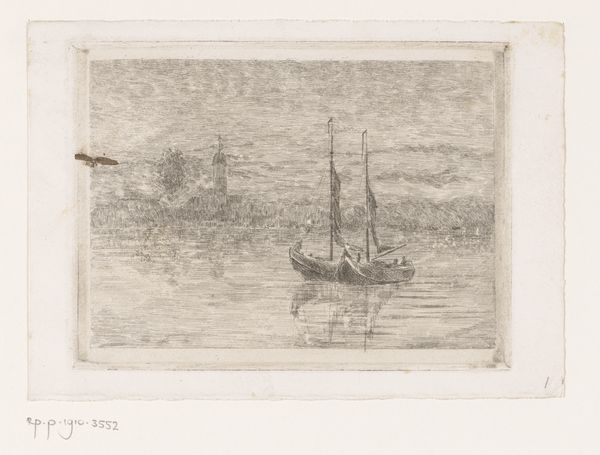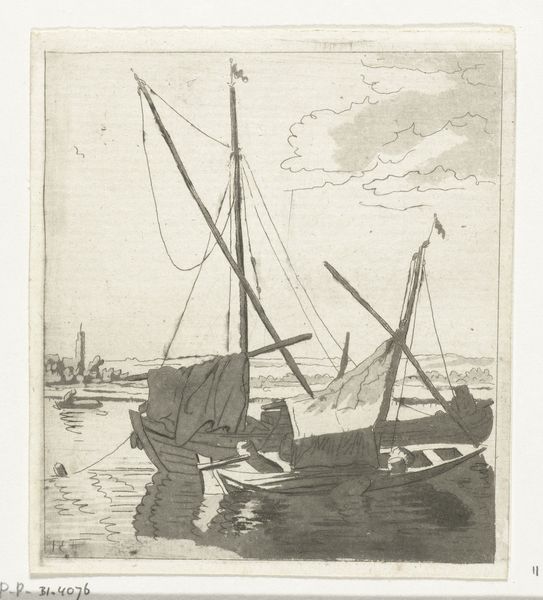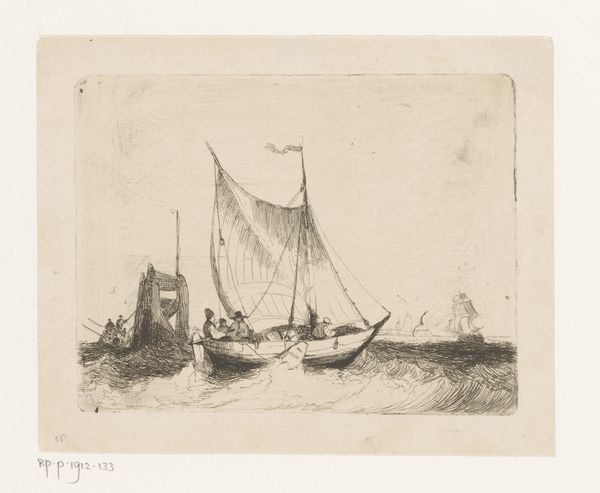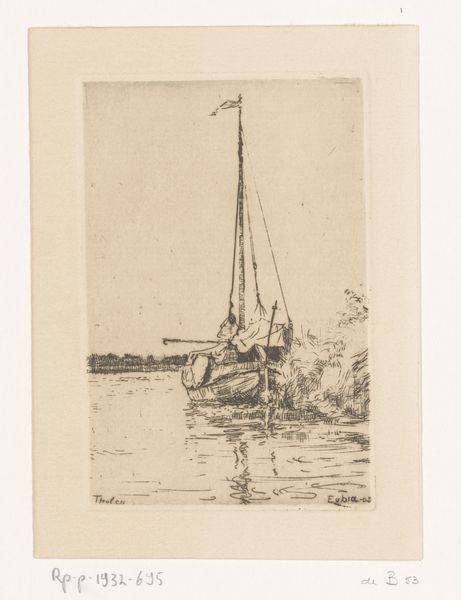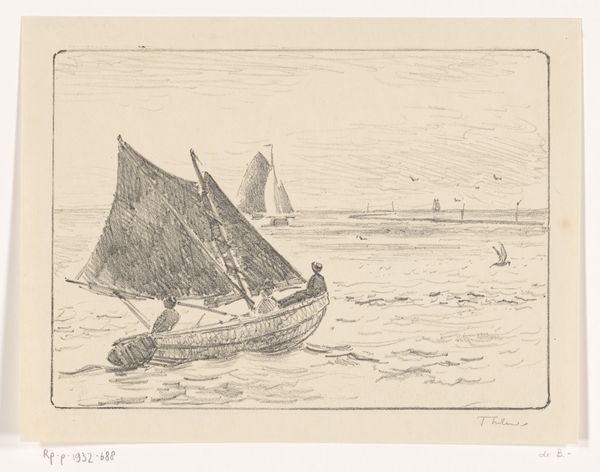
drawing, print, etching, paper, ink
#
drawing
# print
#
etching
#
landscape
#
river
#
paper
#
ink
Dimensions: height 222 mm, width 168 mm
Copyright: Rijks Museum: Open Domain
Editor: Here we have "Zeilschepen op de Maas," or "Sailing Ships on the Maas," an etching in ink on paper by Carel Nicolaas Storm van 's-Gravesande, created somewhere between 1889 and 1902. I’m struck by the almost hazy quality, despite the clear lines. What catches your eye when you look at it? Curator: It evokes a very specific time, doesn't it? Late 19th-century Dutch art was deeply intertwined with a sense of national identity. The Maas river itself was a vital artery for Dutch trade and global connections, so depicting sailboats isn't just about the aesthetic, but also hints at the Netherlands' economic power. Consider how this image may have been viewed against the backdrop of increasing industrialization. Do you think it's romanticizing a past, or perhaps reflecting on change? Editor: That's a good question. It feels a little nostalgic. I mean, is he making a political statement about preserving tradition through this subject matter? Curator: Possibly, or at least participating in a discourse common at the time. The art world, including its patrons, shaped the market around landscapes and maritime scenes as markers of Dutch identity, but also created a vision of Dutch progress linked to water and ships. Do you find anything symbolic in the way the boats are positioned in the composition? Editor: The boat closest to us is prominent, maybe representing a strong presence? The other sailboats seem farther away. Almost fading in time? I don't know if I'm reaching... Curator: No, not at all. The scale certainly guides our eye. Etchings like this were popular among the growing middle class; accessible art depicting accessible, yet still 'cultured,' subject matter. They wanted affordable pieces that spoke to their heritage, their worldliness. Editor: That's fascinating. It shifts my view of the work. I initially saw it as a pretty scene, but now I see it reflects larger social and economic currents of that period. Curator: Precisely. And that’s why context is everything.
Comments
No comments
Be the first to comment and join the conversation on the ultimate creative platform.
